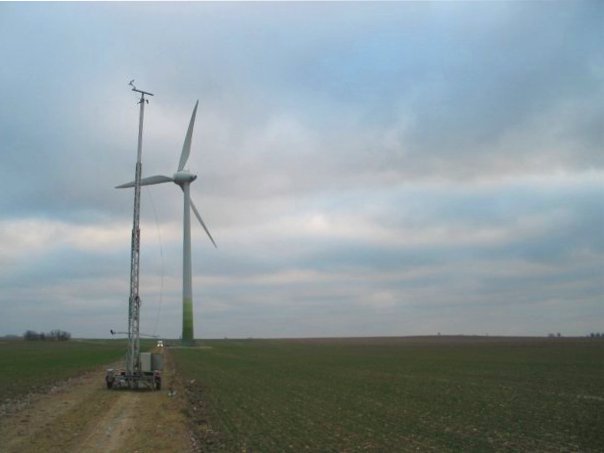Those big, graceful wind turbine power plants dotting the countryside may be a great source of clean power, but they can also represent a source of noise and annoyance to their immediate neighbors. In a quiet rural area, the whoosh-whoosh noise of a large turbine (some exceeding 300 feet from ground to wingtip) can be audible thousands of feet away. Several recent epidemiological studies have shown that annoyance from wind turbine noise is greater than that from other environmental sources (such as highways) at an equal noise level. This discrepancy is likely influenced by unrelated factors (e.g. blocked views), but the continuing push for green energy requires an equal effort to research wind turbine noise and its impact on the health of people nearby.
We recently published the results of a detailed wind turbine noise study in the peer-reviewed acoustics journal Acta Acustica, in conjunction with our colleagues at Chalmers University of Technology and the University of Gothenburg in Sweden. We approached the disparity in annoyance by starting at the source: investigating the accuracy of methods for predicting the noise from a wind turbine in the first place. Such methods are the basis for designing and regulating wind turbine sites, but necessarily simplify complex factors such as wind and temperature influence on sound.
After an extensive campaign of hundreds of field measurements (in the beautiful Skåne countryside) and days of computer simulation, we found that at a relatively short receiver distance, wind and similar factors were not significantly affecting the sound transmission path—the turbines are simply too tall for wind to influence levels nearby on the ground. Instead, wind and temperature fluctuation influence the amount of noise generated at the turbine itself, and may do so in ways that aren’t always accounted for in current prediction methods. As always, further research is needed!





